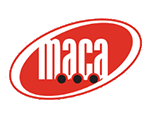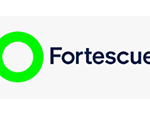
Complete Control over the Stock

Make Tasks Easier

Reduced Human Error

Integrated Barcoding

Productivity and profitability
Intro
Intro
Asset tracking is a crucial part of operations for every organisation these days. The major reason is organisations can have numerous assets with them, and manually tracking the location of those assets one by one can be a time-consuming and costly process. To make this process efficient and less time-consuming, various asset tracking software is available. In this article, you will get to know each detail, such as what asset tracking is, its types, how the asset tracking software is used, and other information about asset tracking.
Facts About Asset Tracking
What is Asset Tracking?


What is Asset Management?
Assets do not have a fixed life span. Their life span depends upon the usage and management done by the business. Asset management refers to the process of planning and controlling the acquisition, usage, operation, disposal of organisational assets. The goal of asset management is to maximise the value of your assets. by maintaining an acceptable level of risk.
Perks Of Asset Tracking
For a company other than profit, what matters is the safety and security of its assets. Asset tracking helps to keep your assets secure and protect them from unauthorised usage. Below are some potential benefits your business can have from implementing asset tracking:
1. Increase the lifespan of the assets
Excessive and inappropriate usage of the asset can decrease its lifespan. Asset tracking will help you track the usage rate and pattern of the asset. This will ultimately help you assess whether you need to improve the way your assets are being used, and as a result, it can help increase the life of your assets.
2. Reduce maintenance costs
Every asset needs maintenance after a specific period. The cost to the business may arise if the asset is not maintained or serviced properly and in a timely manner. Asset tracking sends you reminders to schedule maintenance of the assets and detects the wrong usage. This helps you reduce the maintenance and repair costs of your asset.
3. Streamline audit function and daily operations
Asset audit is an important function of a business. It helps your business in getting a detailed description of the assets possessed by your organisation. Asset tracking makes the audit process more manageable and simpler. Having a clear view of your assets also helps in the easier management of your organisation’s operational activities.
4. Ensure GPS tracking and asset recovery
Sometimes your asset might get lost or stolen, or mixed up with someone else’s assets. In this situation, some asset tracking software can help you track the location of your asset via GPS and give you the exact location of where your assets are currently.
What are the Types of Asset Tracking?
- RFID
RFID stands for radio frequency identification. In this, the management and locating process of physical assets is automated. An RFID tag is attached to the asset. The tag contains data about the asset, such as name, function, location of the asset – and this information is updated when the reader automatically scans the tag from a nearby distance. - Barcodes
Barcode is a unique code assigned to a product that allows you to get real-time updates of the product’s location. Barcodes are the simplest way to track your assets, where the information is updated when a manual scan is done from the reader of the barcode. - QR codes
QR code is somewhat of a variation of a normal barcode and can be beneficial in locating your asset instantly through your smartphone. You just need to scan the QR code with your mobile phone camera and know your asset’s exact location and its condition – as well as any other details stored in the database.


What Does Asset Tracking Software Do?
Using spreadsheets and manual recording of asset tracking information can be a costly and time-consuming task. To address this issue, asset tracking software can be really beneficial. The software fetches real-time information about your physical assets. Below are the important functions performed by asset tracking software:
- Track Everything
There can be several types of assets within the company in one or more places.
The asset tracking software helps you track those assets easily and accurately.
This software can get detailed information such as location, condition, usage, and other essential details about the asset. - Access Information Anywhere
Asset tracking software comes with a mobile application that helps you track the asset from anywhere anytime. You do not require any third person to manage and view your assets’ information when you are off-site. - Create Customised Reports
Asset tracking software stores important information. You can create customised reports regarding the usage and location of your asset on a particular date or month. You can also add lease or contract information in the report, as well as other bits of information to ensure you are getting reports that are relevant for your business.
These were just a few of the key functions performed by asset tracking software to help fulfill your business asset tracking requirements.

- Barcodes for Asset Tracking It is one of the most popular asset tracking methods which enable an organisation to obtain accuracy in data and accelerate asset management, with the increase in the use of asset tracking software by small and large scale businesses. The use of barcode technology for tracking the location and usage details of the asset has increased.
- Tracking with RFID Tracking your organisation’s physical assets through radio frequency identification is one of the more efficient methods of asset tracking. To improve your asset management, RFID asset tracking technology uses electromagnetic fields to transfer important data about the asset location, usage from the RFID tag to the reader. This technique is suitable for tracking large amounts of assets daily.
- Bluetooth / BLE for Asset Tracking BLE stands for Bluetooth low energy or Bluetooth wireless technology. This technology is aimed to reduce the power consumption and cost incurred in asset tracking and maintain similar communication efficiency. BLE tags are the major component of this technology which sends all the important information about the asset to the database.
- Wi-Fi Location and Asset Tracking Wi-Fi location tracking is the latest technology used to track your organisation’s physical assets. In this, a BLE tag sends a beacon-based message to the reader. The message is sent from various access points, which are synchronised by time. This synchronisation helps them to timestamp the message as soon as it is received. The timestamps are then sent to the asset tracking software which translates them and detects the asset location.
Although asset tracking is not a new concept, there have been many new inventions taking place in the field of tracking. Earlier it was done manually, but nowadays, various technologies are used to create feature-rich and AI-based asset tracking software. Given below are some most popular asset tracking techniques:
- Barcodes for Asset Tracking
It is one of the most popular asset tracking methods which enable an organisation to obtain accuracy in data and accelerate asset management, with the increase in the use of asset tracking software by small and large scale businesses. The use of barcode technology for tracking the location and usage details of the asset has increased. - Tracking with RFID
Tracking your organisation’s physical assets through radio frequency identification is one of the more efficient methods of asset tracking. To improve your asset management, RFID asset tracking technology uses electromagnetic fields to transfer important data about the asset location, usage from the RFID tag to the reader. This technique is suitable for tracking large amounts of assets daily. - Bluetooth / BLE for Asset Tracking
BLE stands for Bluetooth low energy or Bluetooth wireless technology. This technology is aimed to reduce the power consumption and cost incurred in asset tracking and maintain similar communication efficiency. BLE tags are the major component of this technology which sends all the important information about the asset to the database. - Wi-Fi Location and Asset Tracking
Wi-Fi location tracking is the latest technology used to track your organisation’s physical assets. In this, a BLE tag sends a beacon-based message to the reader. The message is sent from various access points, which are synchronised by time. This synchronisation helps them to timestamp the message as soon as it is received. The timestamps are then sent to the asset tracking software which translates them and detects the asset location.


Factors To Consider When Choosing Asset Tracking Technology
There are many reasons for companies to implement asset tracking software for tracking their asset’s location and usage details. But which asset tracking technique will prove to be more beneficial and cost-effective for your assets is a tough choice to be made. This decision is to be made based on the type and value of the assets used within your organisation. Here are some factors which needs to be considered while making your decision:
- Value and details of your asset
The assets of every organisation vary from each other in terms of value, details and features. You need to calculate the value of your assets and decide to choose the asset management software according to it. - Installation and usage cost of the asset tracking software
Every technology has a certain installation cost as well as the cost of using it. Sometimes you have to employ trained staff having skills to use the technology efficiently. You need to choose the asset tracking software having the minimum setup cost and maximum benefits. - Cost of risk associated if a loss occurs
As an entrepreneur, you have to predict every cost, whether planned or unplanned. Before finalising the asset tracking software, you need to estimate the value of loss incurred if your asset gets misplaced or stolen. If you have many high-value assets, it’s important to have an asset tracking system in place to minimise losses.
Five Latest Trends in Asset Tracking
The landscape of asset tracking is growing rapidly. Earlier it was used by only a few companies dealing with value-priced assets but now many companies, big and small, are incorporating asset tracking software in their organisational systems. Here are some of the recent trends which are shaping the asset tracking industry:
- Real-time data and analytics
The first trend is about real-time data. During asset tracking, people can view insights related to the current status of the asset, its usage, time of arrival and more. All these data sets record the journey of the asset. Real-time data and analytics help update the users on each and every important piece of information about the asset. - Upgraded indoor positioning technology
Indoor positioning technology has helped in improving data accuracy and reliability. An indoor positioning system refers to the process of locating objects and people inside the building using radio signals and magnetic fields. This technology improves the location sensing power of assets. - Artificial intelligence
In the past few years, no such field has remained untouched from the footprints of artificial intelligence. In asset tracking, AI technology has helped inform when an asset needs repair services and what type of repair it needs. This enhances the lifespan of an asset and decreases its replacement costs. - Internet of Things (IoT)
More recently, IoT technology has become very popular and is starting to make its way into Asset Tracking technology also. Using a combination of Bluetooth, GPS and LTE services, users can see up-to-date information about their assets that is being updated via small “trackers” attached to the asset, container or any moving asset. This technology is especially useful for organisations that need to have near real-time updates about their assets, or organisations whose assets are usually on the move. - Blockchain data records
Blockchain technology can be suitable for organisations that possess huge data. With the help of this technology, the information can be broken down into smaller blocks and linked with their respective past information with virtual chains. It helps to keep data organised and make it easy to understand.


TechnoSource – Your Perfect Asset Tracking Solutions Provider!
Want to make the most out of your organisational assets?
Well, you landed at the right location. TechnoSource is your perfect asset tracking software and solution provider. We provide cloud-based asset tracking software to help you track the real-time location and other important information about your physical assets. We have helped hundreds of businesses maintain the efficiency and productivity of their assets with a feature-rich and cost-effective asset tracking software solution.

Wasp AssetCloud
TWasp AssetCloud – A perfect asset tracking software to mark the safety of your valuable organisational assets. Wasp AssetCloud is cloud-based asset tracking and management software to track your assets’ location, usage, and other important details. The software is easy to use and can be accessed through your browser and mobile phone. The Wasp AssetCloud app provides users detailed information such as location, usage, repairs, and maintenance required by the asset. The software offers asset management services also along with asset tracking solutions.
At TechnoSource Australia, we always aim to provide unique and feature-rich technology-oriented solutions to make your life easier and simpler – and Wasp AssetCloud helps achieve that. Here are some of the features that make it unique and one of the preferred asset tracking software:
- Easy-To-Use Interface
The user interface of Wasp AssetCloud is very easy to use. Your staff can learn to operate it in a very short time. Everything is available in the menu; you just need to click on the icon where you want to visit. If required, our technical team can help you go through any specific questions or features you may need to understand within the application. There is also an online help option available within the application. - Centralised Role-Based Security
The application is secure and can be set up as a single sign-on to operate. This implies that only registered users will be able to access the application. It is role-based, and the information required for your role will be displayed. It is fully secure and protects your assets from unauthorized access. - Eliminate Manual Tracking
Manual tracking procedures can be time-consuming and costly. They also lack accuracy and uniformity. We have a full-proof solution for this problem. Wasp AssetCloud is a cloud-based solution that gives you every piece of information about the asset and makes asset tracking easier for your organisation. - Data Customised for Your Context
Customisation is the most important feature of Wasp AssetCloud. The software allows users to view the data which they want to view. You need not waste time searching for your desired information. You can directly get it by the filter option or through search options. This feature makes the application best for organisations that have a large amount of data tracking information. - Easily Build Reports
In every organisation, certain reports are to be submitted monthly, quarterly, or annually. In these reports, all information about the assets is to be included. Preparing these reports manually can be a time-consuming and lengthy exercise. Wasp AssetCloud allows you to create reports automatically in seconds, and also allows customisation of reports so you can hide or show the information you want.
All the features mentioned above make Wasp AssetCloud the best asset tracking application that can solve all the issues your organisation faces in tracking and managing your physical assets.
At TechnoSource Australia, we always aim to provide unique and feature-rich technology-oriented solutions to make your life easier and simpler – and Wasp AssetCloud helps achieve that. Here are some of the features that make it unique and one of the preferred asset tracking software:
The Bottom Line
This was all the important and valuable information about asset tracking. It will help you decide whether your organisation requires the asset tracking software or not, what kind of software you need, how to choose the best asset tracking software for your organisation, and other important decisions related to asset tracking.
Wasp AssetCloud is one of the best asset tracking and management solutions to help you ensure safety and improve the lifespan of your organisation’s physical assets. Wasp AssetCloud enables you to manage the working of your assets anytime, anywhere, easily with your mobile phone. Explore and find out more about our services and solutions here.
Who we have worked with on Stock Control System
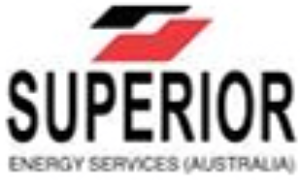
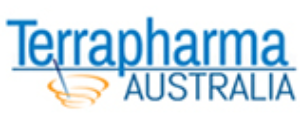





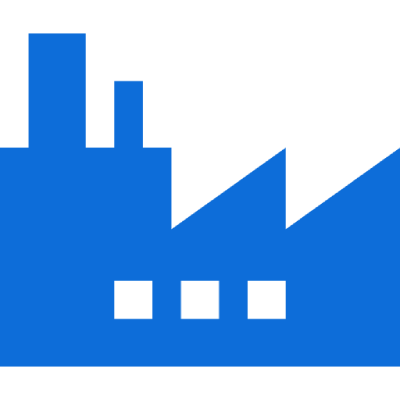

What Our Customers Are Saying About Us
Posted on
Let us know how we can help you!
You can call us or reach out to us on email with your questions or requirements.
Get In Touch
Who We Have Worked With



